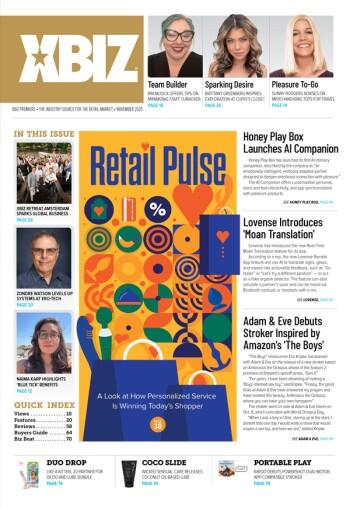There isn’t a lot of argument among adult webmasters today that for many sites, overall traffic levels have declined, often as a result of penalties imposed by Google. Additionally, a shift in consumer interest from carnality to social media is changing the surfing destinations and patterns of many prospects. Thus, if surfers are spending more time on mainstream sites, then that’s the pond where adult marketers have to fish.
While there have been previous articles and discussions at XBIZ surrounding ways in which adult offers can be acceptably presented to mainstream audiences, there is another benefit from this pursuit — the availability of mainstream traffic and revenue sources — including those offered by Google, providing an avenue via which webmasters hurt by a wave of organic search shifts, may literally find some degree of payback.
It’s vital to note from the outset that Google prohibits porn sites from participating in its AdSense and AdWords programs, so you need to use commonsense when crafting an acceptable traffic filtering solution that brings these services into an adult network
Furthermore, for those seeking to diversify their adult revenue streams with a dose of mainstream money, Google’s offerings may prove the perfect ticket to success.
Let’s take a closer look at ways in which Google’s AdWords and AdSense programs can be integrated into adult networks to maximize revenues and traffic:
It’s vital to note from the outset that Google prohibits porn sites from participating in its AdSense and AdWords programs, so you need to use commonsense when crafting an acceptable traffic filtering solution that brings these services into an adult network and be sure to read and understand the programs’ terms and conditions before beginning.
For example, surfers viewing information on hypoallergenic cat beds for their favorite tabby may also have an interest in a different type of pussy — the trick is to bridge that gap without being expelled by Google. Savvy marketers will also want to profit from this visitor, even if looking at cat beds is all they want to do, and then try to trade him or her off for a different visitor.
As they say, all traffic has value.
Getting the basics out of the way, Google’s AdSense program pays you to host ads on your website, while its Ad-Words program allows you to advertise your site on other sites. One is a way of buying visitors for your website, while the other is a way of selling them.
According to Google, its AdSense program provides a free and flexible way to earn money from websites, mobile sites and site search results with relevant and engaging ads, allowing publishers to get more value from their online content.
The company boasts a decade of success, backed by more than two million partners.
“Have AdSense fund your content so you can focus on creating even more,” states an AdSense rep, explaining how webmasters are able to maximize the revenues they receive from their online content.
“We work with millions of advertisers so we can deliver high-quality relevant ads, resulting in more revenue for you,” the rep explained. “You have control over the types of ads that can appear on your pages [while] detailed reports show just how hard your site is working for you.”
Websites displaying ads that are suited to their audience’s interests earn money from valid clicks or impressions and can earn even more by adding a custom search engine to the site that generates revenues from ads appearing on the search results pages.
Sites with mobile traffic can connect their users with the right ad at the right time as they seek information on the go, while online video productions can incorporate relevant, user-friendly advertising for worry-free monetization.
Google makes it sound simple enough, only requiring users to make their ad spaces available after which the highest paying ads will appear on their site.
“You make your website ad spaces available by pasting ad code on your site, and choose where you want the ads to appear,” the rep added. “Advertisers bid to show in your ad spaces in a real-time auction [and] the highest paying ad will show on your site.”
Unlike the problems faced by some adult affiliates, there’s no problem getting paid by Google, with the company handling the process of billing all advertisers and networks for the ads on your site, to ensure publishers receive their payments.
And then there’s Google’s AdWords program, where no matter what your budget, you can display your ads on Google and its advertising network. If the keywords you’ve chosen match what people search for, your ad appears next to or above Google search results and best of all, you only pay when people click on your ads and visit your website.
The company advises advertisers to pick specific keywords and to try multiple ads.
“When it comes to selecting keywords, be specific, and keep your ads (and budget) targeted to the most interested people,” an AdWords rep advises. “Ads, like keywords, help people decide if your business is what they’re searching for. If you offer several different products or services, try creating a unique ad for each one.”
Advanced targeting options and custom ad types allow users to display the most appropriate ads on specific days of the week, hours, for different placements or devices.
“Google ads aren’t onesize-fits-all,” the rep explained. “There’s a whole range of available ad types that you can choose to adopt, from placing a text ad next to search results to reaching web-browsing customers with eye-catching image ads, and even advertising on YouTube — it’s one of the most viewed sites on the Internet, so make sure you’re seen there.”
When it comes to ad buys, one of the first questions a potential advertiser asks is “how much will it cost.”
Google explains that AdWords differs from traditional forms of advertising as this form of traffic doesn’t come with price lists or rate cards, relying instead on a cost-per-click (CPC) based auction where how much you invest is up to you.
“You’ll start by choosing a daily budget you’re comfortable with, and then change it at any time. There’s no minimum spend and you’re not locked into a contract,” the rep advises. “With ads on Google you’re not charged when your ad is displayed, but only when someone clicks on your ad to go to your website. In other words, you only pay when your advertising works.”
Gaining control of your cost-per-click prices is a major advantage when trying to squeeze every ounce of profit from today’s slim margin websites.
“As an advertiser, you get to specify the maximum amount (max CPC bid) you’re willing to pay for each prospective customer that visits your website by clicking on your ad,” the rep added. “This bid then determines how high up on the search results page your ad appears, which eventually determines how often people notice and click on your ad.”
Google says that with AdWords, the advertiser’s bid isn’t the only factor that counts, as relevance pays off.
“AdWords rewards more relevant ads with a higher Quality Score and a higher ad position,” the rep concluded. “So even if your competition bids more than you, you can still win a higher position — at a lower price — with highly targeted keywords and ads.”
For a quick cost example, the company looks at an entry level spend of approximately $10 per day, with a maximum cost-per-click bid of 50 cents and an average cost-per-click of 40 cents, which would yield around 25 clicks per day. That’s about 750 visitors for $300/month.
Is 25 visitors per day now “the new normal” in 2013?
Contrast that figure to an adult affiliate program paying $30 per sale on a site that it converts at 1:750, and then consider this math when wondering why Google is being so “stingy” with the amount of free traffic it sends to your site.
Of course, if you want more traffic from “Big G” for free, the company recommends connecting your site with the Google+ badge to unify +1s on your homepage with +1’s on your Google+ page as a way of boosting your site’s visibility in Google search and on Google+.






